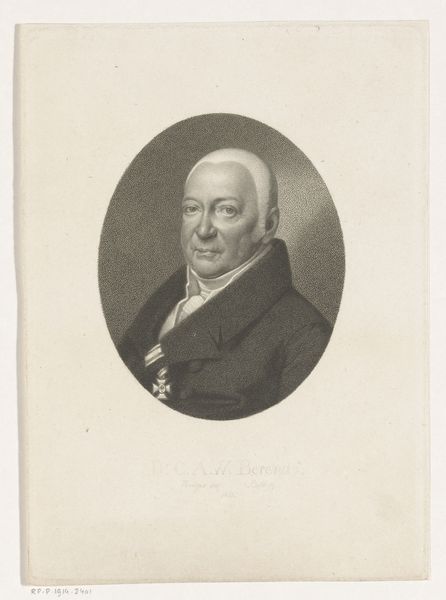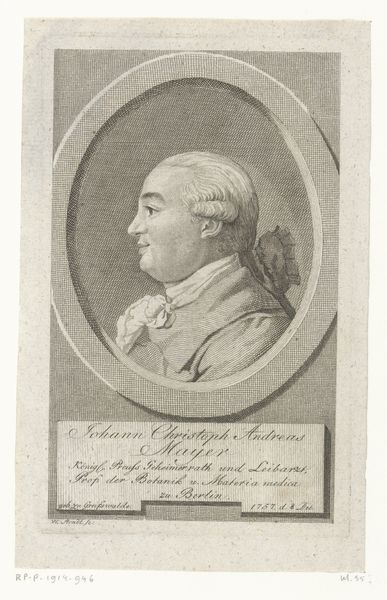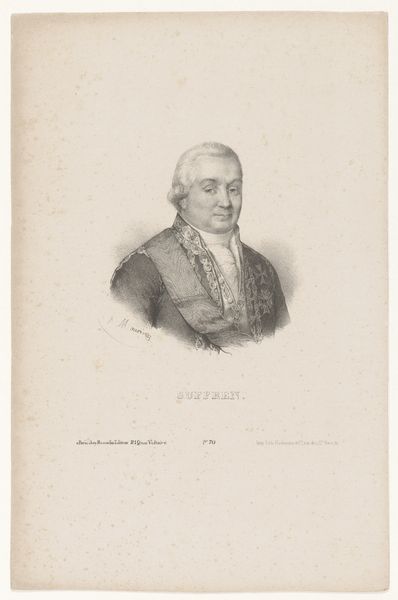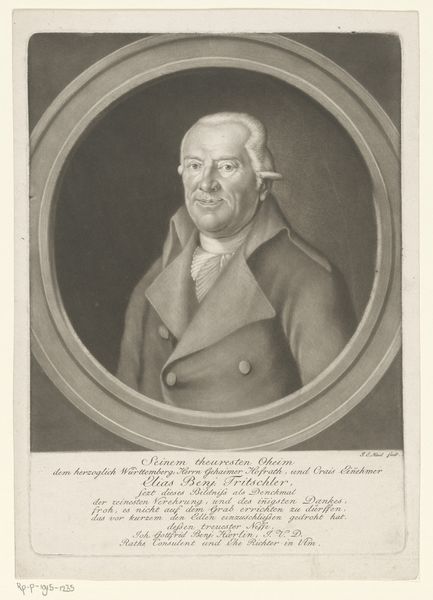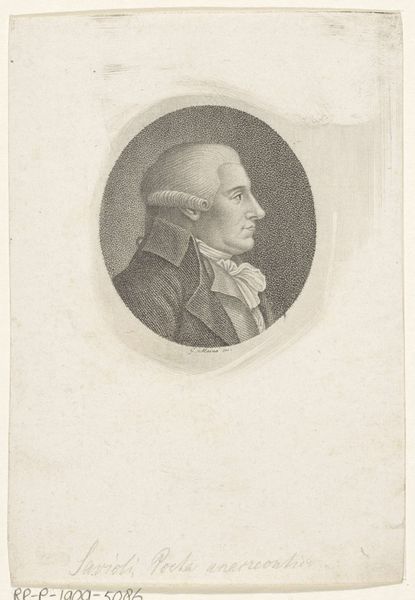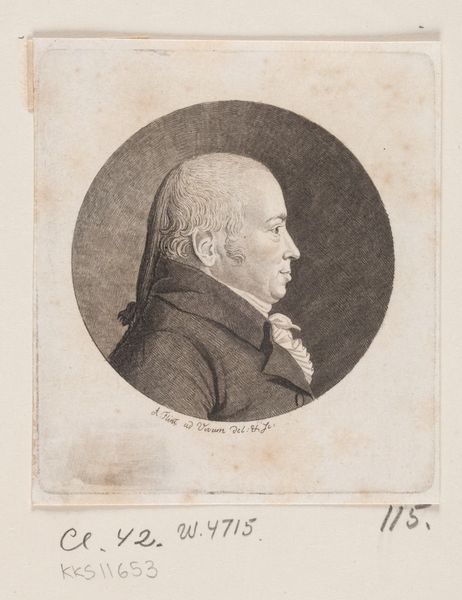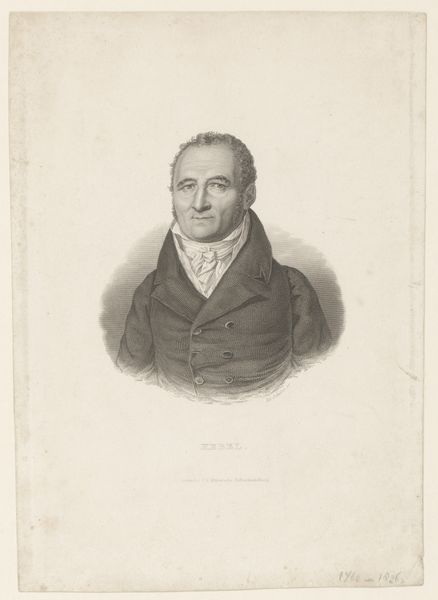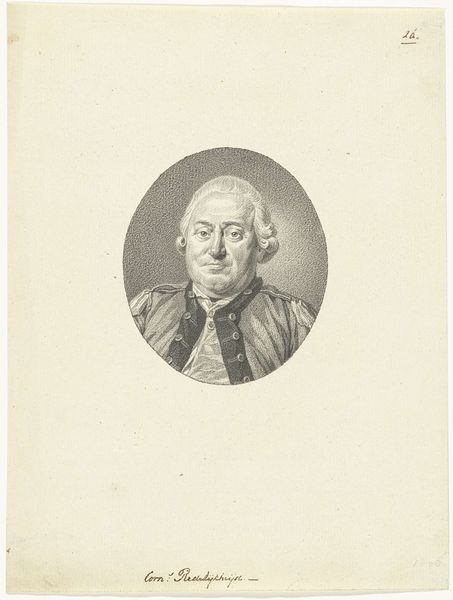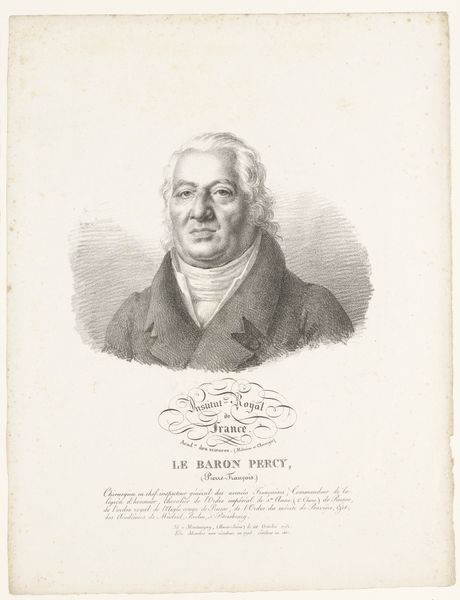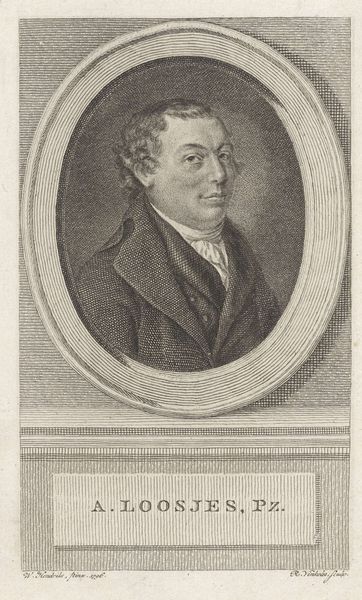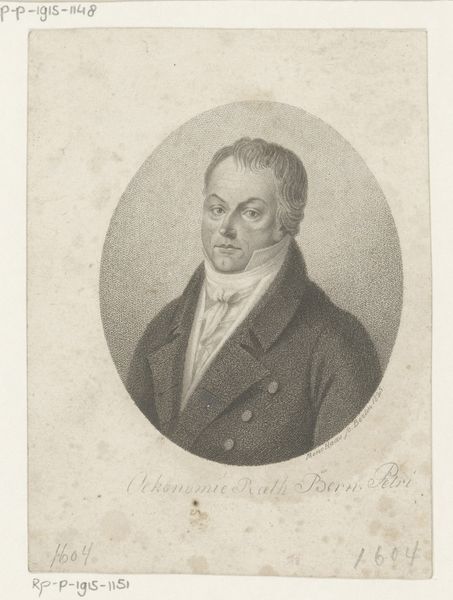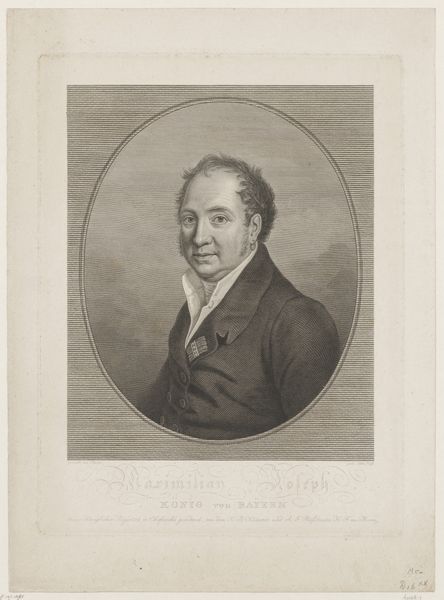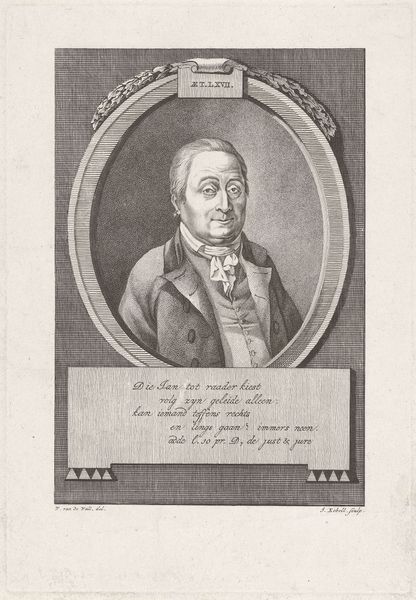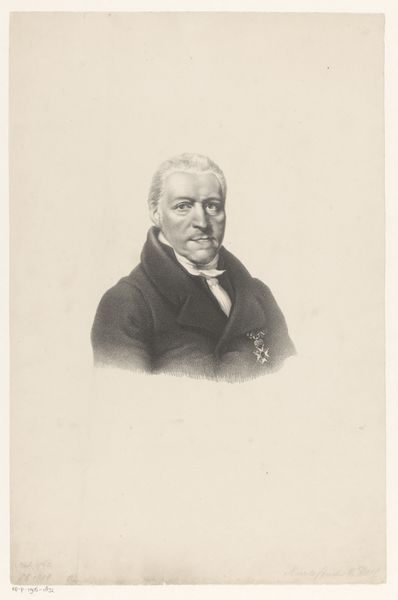
print, engraving
#
portrait
#
pencil drawn
#
neoclassicism
# print
#
pencil sketch
#
old engraving style
#
portrait reference
#
pencil drawing
#
portrait drawing
#
pencil work
#
engraving
Dimensions: height 155 mm, width 120 mm
Copyright: Rijks Museum: Open Domain
Curator: This engraving is entitled "Portret van Johann Georg August Hacker," placing its creation sometime between 1775 and 1840. It's the work of Ernst Ludwig Riepenhausen, rendered in that delicate neoclassical style. Editor: It's quite austere, isn’t it? The engraver has produced something almost clinical. The tight hatching, the geometric frame—it all speaks to control. Curator: Indeed. Neoclassicism, remember, was often employed by those in power—a way of aligning themselves with the perceived rationality and order of the classical world. We must think about the print market too. Portraiture offered social capital and the image-making techniques allowed for wide dissemination, creating new viewing publics. Editor: Which raises the interesting point of access. Prints like this brought portraiture to a broader audience, making visibility a material commodity. One also sees that the details, especially the clothing, suggest an elevated social status: expensive textiles meticulously rendered. But I'm most fascinated by the way the engraver uses such meticulous lines to build form. There’s incredible labor evident in it. Curator: Absolutely. It shows the artist’s investment in conveying the subject’s worth, even perhaps, as part of a project of self-fashioning during this era. Was Hacker involved in governance, patronage, or academia, thus benefiting from image production and social visibility? Editor: One wonders about the conditions in which the artisan toiled. There’s a dedication implied. These weren’t mass-produced in a modern sense; each one required careful handwork. This intersects, perhaps paradoxically, with neoclassical ideals by bringing a tactile reality into the equation. Curator: It forces us to remember the often invisible workforce behind cultural and political projects, underlining the material conditions which allowed these aesthetic movements to flourish and perpetuate certain socio-political narratives. Editor: Well, it certainly offers food for thought. Thinking about materials and labor changes how we consider the subject and era, it really provides another way to connect with it.
Comments
No comments
Be the first to comment and join the conversation on the ultimate creative platform.
